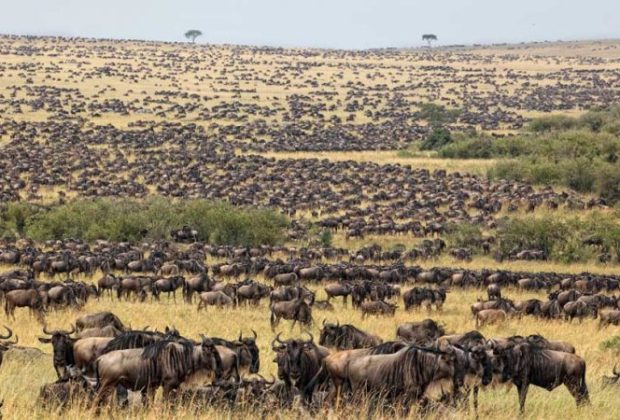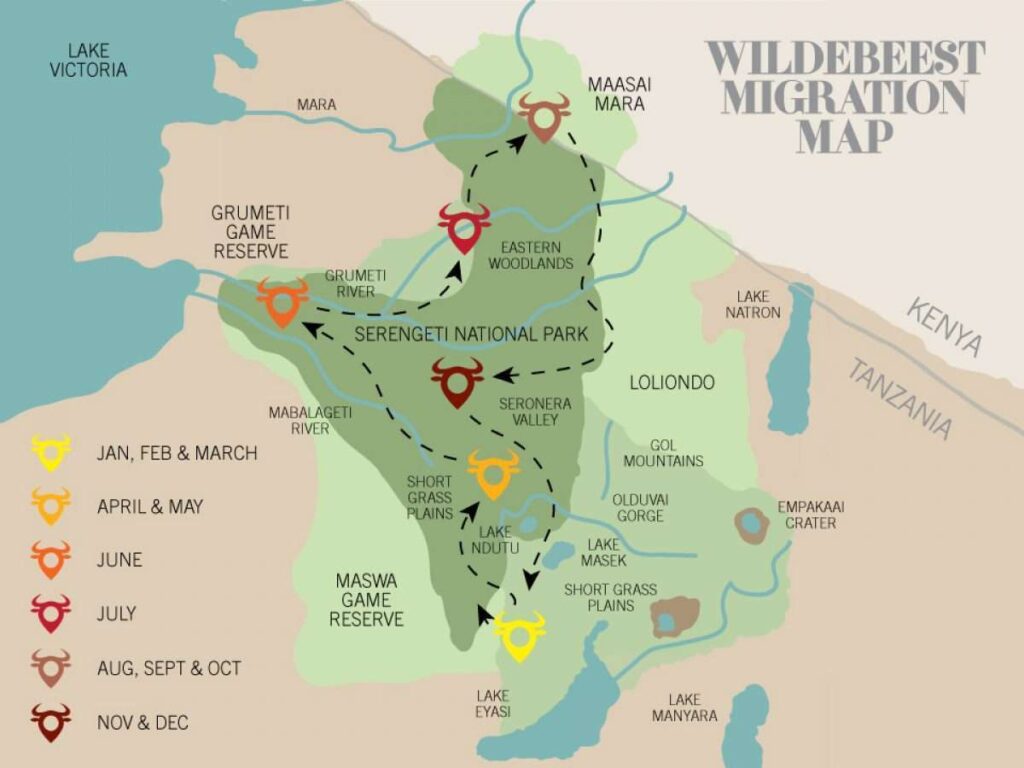One of the most sought-after experiences for wildlife and nature enthusiasts, the Great Migration is the ever-moving circular migration of over a million animals across the Serengeti-Mara ecosystem. The constant movement of columns of wildebeest, joined by a host of companions, follow an age-old route in search of grazing and water.
This journey takes them across the plains of the Masai Mara in Kenya, all the way south into Tanzania through the Serengeti and to the edge of the Ngorongoro Crater, before circling up and around in a clockwise direction.
Along the way, high drama is always present, as thousands of animals are taken by predators and thousands more are born, replenishing the numbers and sustaining the circle of life.




